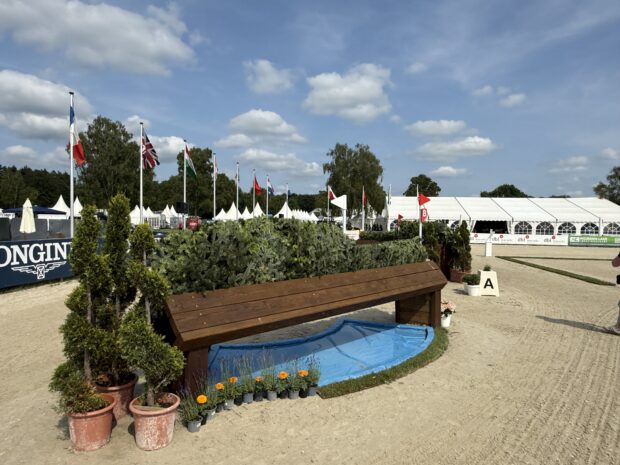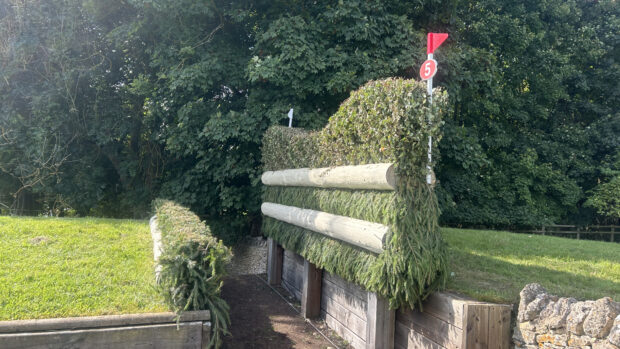Caroline Moore, former five-star eventer and British Eventing national under-18 coach and junior team coach, explains how to tackle shoulder brushes across country
For this exercise I have set up a right-handed corner on a very subtle curving line, 20 yard (18m), to two angled brushes on a one non-jumping stride distance (8 yards/7.4m), set on a slight left-handed angle.
The important thing to remember when riding a line like this is having a good quality canter, that you have made a good, square turn and that you maintain your rhythm.
It doesn’t always go to plan in training. You might have a good jump into the exercise, but if the horse doesn’t automatically sight the move onto the next line, you have to always keep riding straight, giving the horse confidence by trying to make him forget the mistake he’s just made, and carry on riding forward. If this happens, ride through the line again to ensure he is confident, always giving a very strong inside leg aid, just to back up if he has a little wobble.
On a slightly different line through the exercise, there is a change of direction, so you have to make sure that you catch your horse’s shoulder to hold the line to the new direction.
I often put a few fences like this together in the school as it’s really good for the rider, making them more competitive. It will certainly also improve your reaction times by moving from one exercise to another. All of these exercises require balance and coordination.
The main points to be aware of are:
- Making a good turn in — this is effectively your horse’s eyesight through the line. It’s really important that you follow this good turn through, riding with a focal point.
- Make sure you always think about turning your horse’s withers and shoulders before his nose, then you will be turning your whole horse through the line, not just his head and neck.
- Always give your horse lots of praise and reward for this — your horse will really appreciate it and want to work for you.
More expert training advice from Caroline:

Holding a straight line across country — the difference between success and failure
Caroline Moore, former five-star eventer and British Eventing national under-18 coach and junior team coach, explains how to teach a

Subscribe to Horse & Hound magazine today – and enjoy unlimited website access all year round
For all the latest equestrian news and reports, don’t miss Horse & Hound magazine out every Thursday




